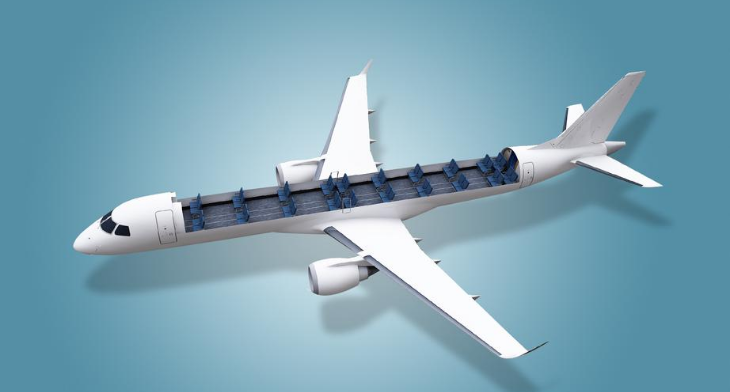
Embraer has developed cargo transportation solutions for its line of commercial aircraft to cater for the growing demand for air cargo capacity.
“Embraer’s engineers rose to the challenge when our customers asked them if they could find a way for their Embraer airplanes to carry more cargo payload,” explained Johann Bordais, President & CEO, Embraer Services & Support. “Today, customers can choose from a portfolio of solutions to carry cargo in the cabins of their EMB 120s, ERJ145s, and E-Jets.”
In response to ANAC, Brazil’s civil aviation regulatory authority, granting exemption for the carriage of additional freight on Embraer passenger aircraft, the manufacturer has published Technical Dispositions for the ERJ145 and E-Jets families of commercial jets, including the E-Jets E2s, which explain how to accommodate cabin freight. A Service Bulletin is available for the EMB 120.
Small packages can be placed in overhead bins and stowage compartments, and cargo items placed on each seat, subject to certain restrictions. A fully loaded 96-seat E190 can carry 6,720 lb (3 metric tonnes) of cabin freight in addition to under floor cargo. A 118-seat E195 can carry 8,260 lb (3.75 metric tonnes).
Customers can opt for a floor-mounted freight configuration if their cargo cannot fit on passenger seats. This solution permits the removal of up to 70% of the passenger seats, with the remaining areas accommodating for items on the cabin floor. Freight must be contained in approved netting that attaches to the inboard and outboard seat tracks. This solution has already been developed for a first generation E195 jet for Azul Cargo, in Brazil.
Cabin payload capacity for the ERJ145 is up to 1,750 lb (0.8 metric tonnes) and up to 5,194 lb (2.36 metric tonnes) for the E190-E2. For customers needing even more capacity, Embraer may offer a Service Bulletin for full cargo configurations, as has been done for the EMB 120. These layouts give operators the flexibility to carry larger floor-mounted freight items in the cabin.





